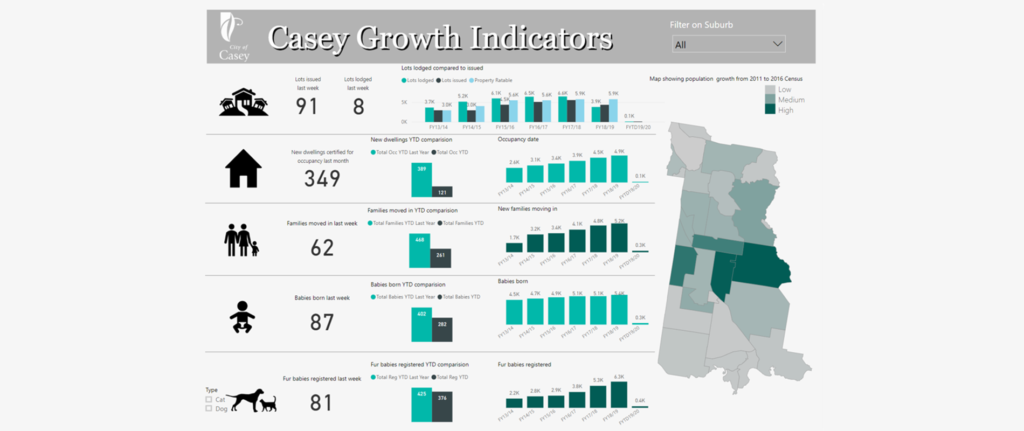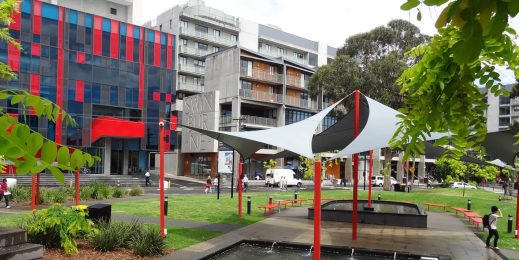
City of Casey maps its future with a dash of data analytics magic
Once upon a time the main business of local councils could be dismissed as ‘rates, roads and rubbish’, but no longer. Today, local councils are responsible for a rich array of sophisticated and often complex services, they need to respond to demographic shifts in the community, to plan for the future and meet ever growing ratepayer and resident expectations.
The City of Casey is one of the fastest growing local councils in Australia. Located South East of Melbourne, it has around 350,000 residents today, but is experiencing massive growth and has a forecast population of 550,000 by 2041.
The challenge for Casey now is to deliver exceptional services to the community without ballooning; it can’t just keep adding more resources – instead it is using data to make better decisions and empower its employees and executives.
Will Babington, manager strategy and business intelligence, explains that the City of Casey has undertaken a significant and rapid data transformation. “Two years ago we had one senior data analyst, one Power BI user, and produced about five reports using the system. A lot of decisions were based on gut feel or backed by a trawl through some spreadsheets.
“Today, just two years, on we have a senior data analyst, a data engineer, about 100 Power BI users creating 850 reports and it’s delivering transparency and an evidence base for decision making that we have never had before.”
The data driven transformation has also allowed City of Casey to introduce an online community dashboard that tracks the council’s performance against its targets as well as graphical growth indicators that help planning and project management.
Richer insight, streamlined compliance
Warren Dean is a senior data analyst for the city of Casey and explains that the organisation is an Office 365 enterprise site, and has had access to Power BI for a couple of years. It’s use however has really flourished in the past two.
At present the organisation does not have a data warehouse, instead it draws data from a range of existing SQL server databases and makes that available to Power BI. The growing appetite for Power BI and data analytics has however led to the organisation recognising the benefit of establishing a data warehouse, and it is currently considering creating Azure based data hubs that individual departments could access directly.
Even ahead of that, Power BI is helping to rein in risk says Dean. “We had one person who worked on a legacy system. He had to extract five Excel spreadsheets out of the system and use Vlookups to create a report he had to send off to a statutory body, once a quarter. Now with Power Bi that’s completely automated.
“It’s reducing the risk of error and giving him back time that he can now spend actually doing his job instead of just messing around with ad hoc Excel spreadsheets to create reports.”
The richness of insight available to City of Casey extends far beyond meeting its regulatory reporting requirements.
Babington says that it has sparked new initiatives such as using data from people meters installed at Bunil Place to allow Council to gain a fine-grained understanding of what facilities people are using when, and it’s getting insights about parking patterns in much the same way.
When it comes to planning, Casey is also able to use its own data alongside third party data, from for example the National Census.
Dean outlines the sorts of insights now being revealed; “Every child in any council area needs to go to maternal and child health for their first checkup and subsequent home visits buy a maternal and child health nurse. We use that information to predict where we need our next kindergartens to be located, because we have the information about newborns in our municipality so that we can then start predicting where they might be in four years’ time.
“We’ve got a heat map in Power BI that shows where the hot spots are and where we might have an oversupply.”
Bringing in Census data adds a further layer of insight and understanding.
Dean worked with council employees to understand the insights that might help them. One challenge local libraries faced was knowing where to locate foreign language books. “Now they can click in this Power BI report and go to the question about languages and they can select any language they want,” and the tool will map where people who speak languages other than English live.
“We also noticed that since the 2011 census, we’ve had a huge influx of people from Afhanistan within the City of Casey.” Dean said that wasn’t obvious until employees started analysing data in much greater detail.
The City of Casey is taking a lead role to promote the benefit of data to other councils and Dean has founded a local Government business intelligence meetup that is regularly attended by around 30 Victorian councils.
“It’s not Power BI specific, it’s business intelligence specific – but the majority of councils that I speak to are on the Microsoft platform,” says Dean.
Accelerate to value
The City of Casey has embraced business intelligence fast and carved itself a reputation as a pioneer in the field. Dean recommends that other organisations which also want to extract more value from their data need to first identify the low hanging fruit and work with teams of people who understand that they can benefit from information sharing and collaboration.
Working with IT and identifying useful data collections and how they can be accessed, enables an organisation to then start getting some runs on the board that shows the rest of the organisation what is possible and can be achieved.
He also suggests organisations identify their “Excel super users… because the jump from Excel to Power BI is minimal.”
Once they are converted they become the evangelists for the entire organisation, accelerating the pace at which data can make a real difference and deliver value for all.
















